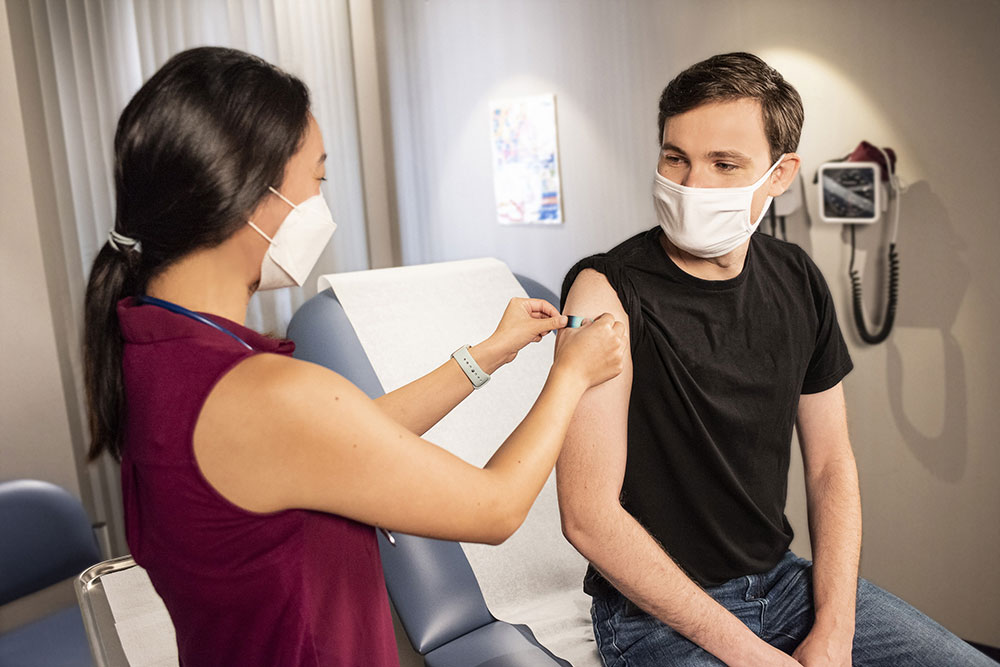Survey Looks at the State of the COVID-19 Pandemic at the End of 2022
New report sheds light on the state of vaccinations and ongoing health risks at a time when the nation is experiencing a “tripledemic”
Get all our news
The lack of continued vaccination is extremely frustrating for the public health community. Given the low levels of general media coverage, a lot will fall to personal physicians and local communities to advocate for vaccination.”
James Druckman
IPR political scientist

A survey of American adults found that nearly half reported having been infected with COVID-19 at least once, with 35% saying they have tested positive more than once. The report also revealed that a substantial majority of Americans have not yet received the latest bivalent booster shot.
The new report provides a snapshot of the state of the pandemic at the end of 2022, including case rates, vaccine and booster shot uptake, antiviral treatment usage, mask-wearing habits, and flu shot rates. It sheds light on the state of vaccinations and ongoing health risks at a time when the nation is experiencing a “tripledemic,” with flu, COVID-19, and the respiratory illness RSV (respiratory syncytial virus), circulating among Americans.
The survey was conducted by researchers from the COVID States Project, a consortium of universities that includes Northwestern, Harvard, Northeastern and Rutgers, who surveyed 26,161 American adults across all 50 states between Oct. 6 and Nov. 9.
“We are now approaching two years since vaccines became available but the health threat of COVID-19 remains, even as most return to pre-pandemic life,” said IPR political scientist James Druckman, who co-authored the report. “It is essential to continue to track the pandemic to inform continued attempts to control it.”
The study found that the rate of COVID-19 infections is vastly underreported, with about 48% of all positive cases not reflected in official data. Among the survey respondents who tested positive for COVID-19 during the past three months, 76% used an at-home or rapid test. Among those who tested positive, just 36% followed up with a test at their doctor’s office or a testing facility (92% of whom tested positive again there), compared to 63% who did not.
Unvaccinated individuals were more likely to say they have never taken an at-home test for COVID-19, further suggesting that infections among the unvaccinated may also be going unreported.
The survey also highlights the difference in severity of symptoms for individuals who are unvaccinated versus those who are vaccinated. Among individuals who reported having COVID-19 in the past six months, 43% of unvaccinated individuals classified their illness as severe compared to 30% of those with two or more booster shots.
The average duration of symptoms was nearly nine days for those who reported having COVID-19 in the past six months. Those who were vaccinated and boosted, however, report being sick fewer days than unvaccinated individuals.
The most common symptoms for those with acute or long COVID-19 were fatigue (51%), shortness of breath (38%) and cough (36%). And 1 in 9 adults reports symptoms continuing two months beyond their initial, or latest, infection.
Despite the efficacy of COVID vaccinations and boosters, a substantial majority of American adults have not received the bivalent booster shot, although a majority of those say they plan to or are open to getting the shot.
“The lack of continued vaccination is extremely frustrating for the public health community,” Druckman said. “Given the low levels of general media coverage, a lot will fall to personal physicians and local communities to advocate for vaccination.”
Read the entire story on Northwestern Now. Previous COVID States Project survey results can be found here.
James Druckman is the Payson S. Wild Professor of Political Science and IPR associate director and fellow.
Photo credit: Pexels, CDC
Published: December 14, 2022.


